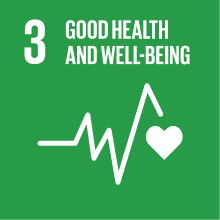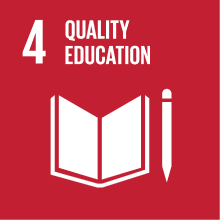DIGITAL AND PUBLIC ART MOD.2
- Academic year
- 2025/2026 Syllabus of previous years
- Official course title
- DIGITAL AND PUBLIC ART MOD.2
- Course code
- FM0495 (AF:567679 AR:322991)
- Teaching language
- English
- Modality
- On campus classes
- ECTS credits
- 6 out of 12 of DIGITAL AND PUBLIC ART
- Degree level
- Master's Degree Programme (DM270)
- Academic Discipline
- L-ART/03
- Period
- 3rd Term
- Course year
- 1
- Where
- VENEZIA
- Moodle
- Go to Moodle page
Contribution of the course to the overall degree programme goals
This 30-hour course is part of the Master’s Degree Program in Digital and Public Humanities and is related to the Venice Centre for Digital and Public Humanities (VeDPH) within the Department of Humanities.
The teaching aims to introduce students to key artistic practices, from the 20th-century avant-garde movements to contemporary digital art, that have contributed to the development of the concept of the virtual museum. Special attention will be given to artistic approaches that have positioned the museum as a space for public participation and interaction.
Expected learning outcomes
- Knowledge and Understanding: students will gain an understanding of the historical and artistic context that laid the groundwork for the creation of virtual museums and the emergence of digital museums. This will be developed through the study of art history exhibitions and works by contemporary artists. The course will also analyze the methodologies adopted by digital artists in interpreting exhibition spaces and engaging with audiences in these environments.
- Applying Knowledge and Understanding: students will develop the ability to recognize various forms of public art, with particular emphasis on those that have reimagined the concept of the museum and archive through digital language. They will also learn to identify and analyze the specific digital languages used by artists, with a focus on the application of generative Artificial Intelligence in artistic creation.
- Analytical Skills: students will be able to analyze the digital reproduction of art in online and virtual museum contexts, and to discuss their observations using appropriate terminology and sound formal analysis.
- Communication Skills: students will acquire the ability to use appropriate terminology to comment on and present the results of their work. They will also learn to interact respectfully and effectively with peers and teachers.
- Technological Competence: students will be able to apply their art historical knowledge and analytical skills, along with digital tools, to produce an original, critical, and scholarly project.
Pre-requirements
Contents
The role of the museum institution will be examined. The online component has become an exhibition context, a place for the preservation of digital artworks, from net art to generative art, and a platform for interaction with the public. Finally, recent productions dealing with Artificial Intelligence will be examined, both for creative purposes and for exploring production methods and artistic research.
Attention will be paid to the forms of representation of works of art, highlighting the role of digital productions from the artistic field and the creative cultural industries collaborating in curating and interpreting museum spaces to improve access to knowledge of works of art.
A section of the course will focus on digital art production using artificial intelligence algorithms, looking at the latest trends in artistic creativity.
The aim of the lectures, which complement the study of the texts in the bibliography, is to provide tools for understanding the phenomenology of artistic processes that use digital media and make use of the pool of data made available by the open-access collections of museums.
Referral texts
C. Paul, Digital Art, Thames & Hudson Ltd, 2015.
C. Paul, A Companion to Digital Art, John Wiley & Sons, Inc. 2016.
T. Giannini, J. P. Bowen, Museums and Digital Culture. New Perspectives and Research, Springer 2019.
L. Manovich, AI Aesthetics, Strelka press 2019.
Cohen, K., Elkins, J., Aronberg Lavin, M., Macko, N., Schwartz, G., Siegrfied L., S, Stafford, B., Digital Culture and the Practices of Art and Art history, in «Art bulletin», 79, n.2 (1997), pp.187-216.
D. England, T. Schiphorst, N. Bryan-Kins (edited by), Curating the Digital. Space for Art and Interaction, Springer, 2016
Frieling, R., The Museum as producer: Processing Art and Performing a Collection, in New Collecting: Exhibiting and Audience after New Media Art, a cura di Graham, B., London, New York, Ashgate, 2014, pp.133-158.
Grasskamp, W., The Book on the Floor: Andre Malraux and the Imaginary Museum, Getty Research Institute, 2016.
Grau, O. The Complex and Multifarious Expression of Digital Art & Its Impact on Archives and Humanities, in A Companion to Digital Art, a cura di C. Paul, Wiley, Blackwell, Chichester, 2016, pp. 23-45.
Hall, D., The Original and the Reproduction: Art in the Age of Digital Technology, «Visual Resources», 15, nNo. 2(1999), pp. 269-278.
Assessment methods
The evaluation will take into account the following elements
- The scholarly quality of the critical essay on the project developed (30%);
- The theoretical depth of the topics (30%);
- The clarity and accuracy of the project presentation (30%).
- The level of interaction in the lectures, seminar activities, and conferences offered (10%).
The exam program for non-attending students remains the same, but they must contact the teacher to agree on the topic to develop.
Attendance is strongly recommended.
Type of exam
Grading scale
Grades will follow this range:
Insufficient (≤17) – Limited knowledge. Inadequate to reflect and present ideas.
Sufficient (18-20) – Uncertain or partially reworked knowledge. Basic or adequate skills.
Fair (21-23) – Sufficient or fair knowledge, reworked with some uncertainties. Decent skills.
Good (24-26) – Correct or complete knowledge, confidently reworked. Good skills.
Distinct (27-28) – Complete and confident knowledge. Notable skills.
Excellent (29-30) – Extensive knowledge, independently reworked. Excellent skills.
Outstanding (30 with honors) – Broad and in-depth knowledge, independently reworked. Full mastery of the language.
Teaching methods
Lectures will be integrated with seminars, workshops, and in-class student presentations and debates.
The texts covered and discussed in class, with any supporting tools, are provided by the teacher during the course and made available on the Moodle platform. These texts, collected in a list at the end of the course, are an integral part of the exam program.
Further information
2030 Agenda for Sustainable Development Goals
This subject deals with topics related to the macro-area "Human capital, health, education" and contributes to the achievement of one or more goals of U. N. Agenda for Sustainable Development


